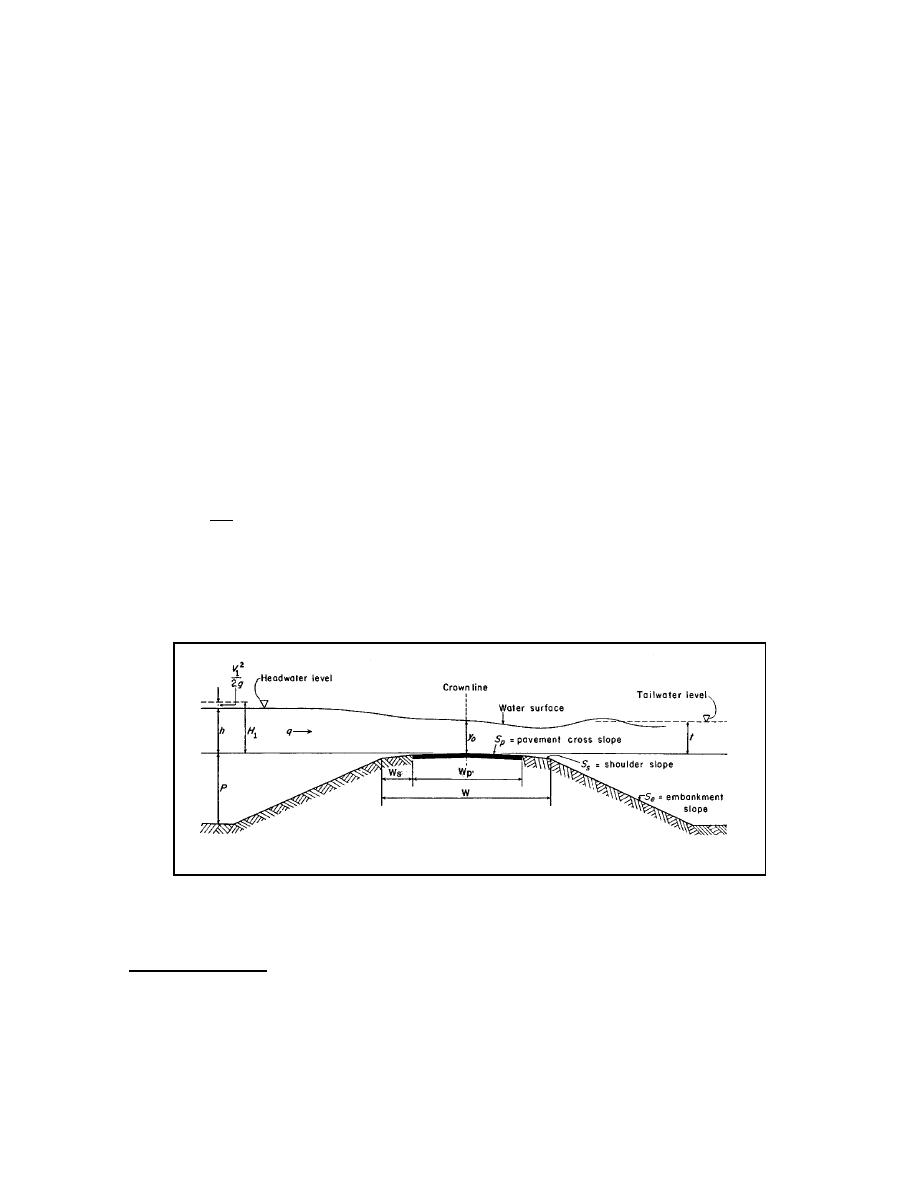
enough such that backwater conditions on the crest do not occur. Free flow is further
subdivided into either free-plunging or free-surface flow. The term plunging flow is used
when the high-velocity jet plunges under the tailwater surface, creating a hydraulic jump.
Surface flow occurs when the jet separates from the downstream slope of the embankment
and "rides" over the tailwater surface. The generally accepted equation for discharge over
an embankment is
q = C H1/2
3
(6.27)
where:
2
2
q
=
Discharge per unit width, m /s (ft /s)
C
=
Experimentally determined coefficient (for level-crested embankments,
C ≈ 0.51 for SI units or 3.0 for English units)
H1 =
Total head above the embankment crest, m (ft)
The second flow behavior is known as submerged flow. In this case, the tailwater is high
enough to affect the discharge over the embankment. For the case of submerged flow, the
equation becomes
C
q = C H3/2 s
(6.28)
C
where Cs is the submergence coefficient and the term Cs/C is dimensionless. Figure 6.26
illustrates the variables needed to describe overtopping flow (Kindsvater 1964).
Figure 6.26. Definition sketch of variables involved in overtopping flow (Kindsvater 1964).
Hydraulic Analysis. In 1983, FHWA initiated research for which a full-scale testing facility
was constructed in Fort Collins, Colorado. This facility was used to carry out a two-phase
research project. Phase I consisted of an extensive literature review, field studies, and
prototype-scale embankment tests involving different types of protection systems. Analysis
of these studies developed embankment erosion equations and a computer simulation
program called EMBANK (Chen and Anderson 1987). This program was used to develop
6.46




 Previous Page
Previous Page
